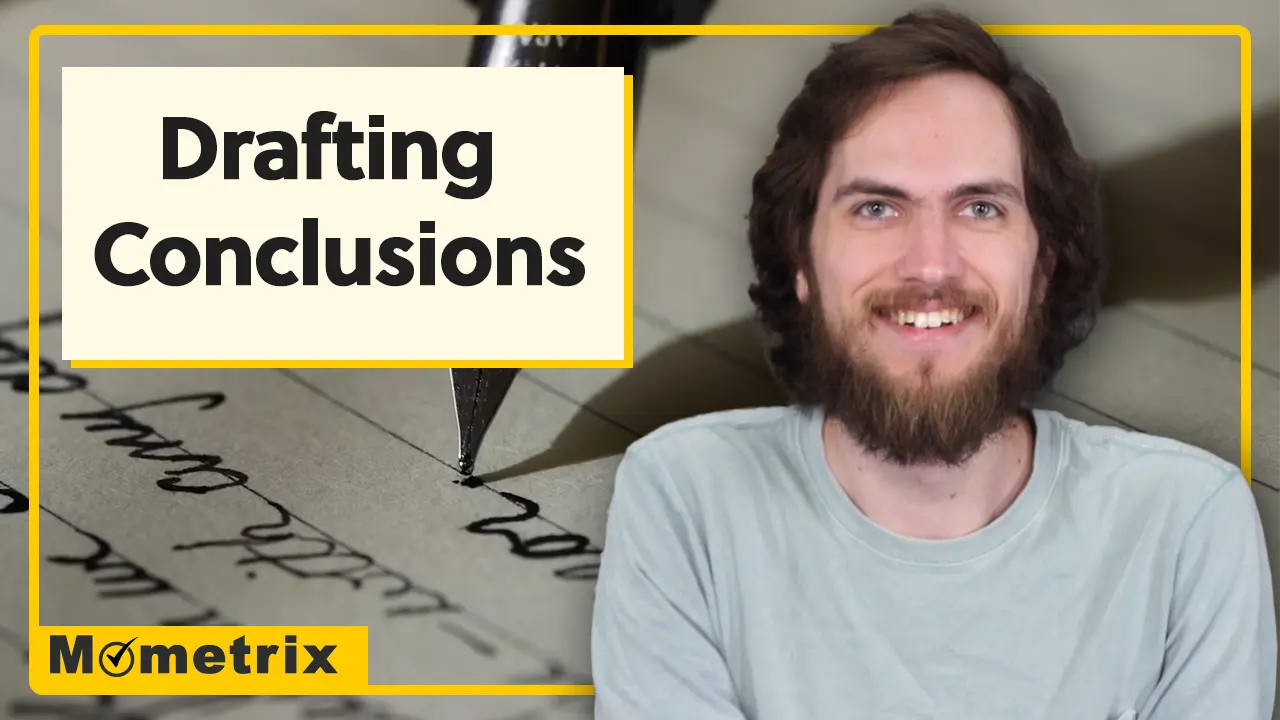
Writing a conclusion might just be the hardest part of writing an essay. You’ve already said all the important stuff, like your thesis and your supporting points. What more is there to talk about?
You might have heard this saying about about public speaking or essay-writing:
- First, tell them what you’re going to tell them.
- Then tell them.
- Finally, tell them what you told them.
Your introduction is where you explain what you’re going to talk about, your body paragraphs are where you talk about it, and your conclusion is where you review what you just told them.
That can be a helpful way to think of introductions and conclusions, up to a point, but it oversimplifies the differences between the introduction and the conclusion. To understand these differences, we first have to know what each of them is supposed to accomplish.
Introduction vs. Conclusion
The introduction is your reader’s first glimpse into your topic. In it, you present your main argument or idea and give a preview of your supporting details. So the introduction has two purposes:
- It introduces the main idea.
- It gives an overview of your points.
The conclusion, on the other hand, wraps everything up. It reiterates not just the idea but the importance of the idea. So the purpose of the conclusion is to:
- Give closure to the discussion.
- Leave the reader with something to think about.
Introduction and Conclusion Examples
Let’s look at an example of an introduction and a conclusion so that you can get a better idea of what I mean.
Say you’re writing an essay arguing that people should colonize Mars as quickly as possible. Here’s what your introduction might look like
Okay, so that’s your introduction. In it, you list your thesis, your main idea: “Humanity should make colonizing Mars a priority.” Then you give an overview of your three supporting points: “Doing so will help us better understand Earth, learn about the potential for alien life, and prepare for our future.”
Now, let’s look at the conclusion for this essay.
This conclusion reminds the reader of the main point of the essay: “The sooner humans land on Mars, the sooner we change for the better.” It also rephrases the most important points as questions. You don’t always have to present your supporting points as questions, that’s just what I did here.
This conclusion doesn’t directly quote or restate any of these points but simply brings the ideas back up to provide the reader with a sense of closure.
This conclusion also gives the reader something more to think about by talking about the philosophical implications of colonizing Mars. The reader will walk away from the essay not only understanding the point but thinking about the implications of it. That is a good conclusion.
Now that we’ve shown the differences between an introduction and a conclusion, I’d like to leave you with some practical steps for crafting your own conclusions.
How to Draft A Conclusion
Let’s start by going over things you should avoid when writing a conclusion.
First, don’t start your conclusion with “in conclusion.” It’s honestly a little boring. It should be obvious that you are wrapping things up without having to say, “Hey, this is the conclusion.”
You also don’t want to introduce a completely new idea. If I included a sentence about how I think getting to Venus will be even better than colonizing Mars, the reader will be distracted from the main point and confused about why I hadn’t mentioned Venus before if it’s important enough to be in the conclusion.
And finally, you shouldn’t repeat your thesis word-for-word. Instead, you want to rephrase it.
Now, onto things you should do when writing your conclusion.
You should rephrase your thesis statement and remind the reader of your supporting points.
You should also leave your reader something to think about by presenting some implications of your argument or showing how it fits into a larger context. Make sure you are going broader or deeper with an idea already mentioned, not adding a new idea. This can be tricky to do, so remember to ask yourself if this idea has already been introduced.
Review
To test that you understand conclusions and how to write them, let’s do a couple of practice questions!
1. The purpose of the conclusion is to…
- Quote the thesis statement and give the reader closure.
- Give the reader closure and leave them something to think about.
- Summarize everything in the essay.
- Leave them with a new and stronger supporting detail.
The conclusion should give the reader closure and leave them with something to think about. Choice A is incorrect because you want to rephrase your thesis statement, not directly quote it. Choice C is incorrect because you don’t need to summarize your entire essay in your conclusion. D is also incorrect, because you should not introduce new ideas in your conclusion.
2. Which sentence could you add to improve the following conclusion?
- Regardless of what some claim, there is no evidence that video games cause violence.
- As stated earlier in my thesis, “All high schools should offer a class on video games.”
- Classes on video games will help improve hand-eye coordination, appreciation for the arts, and computer literacy.
- In conclusion, video games are good for students.
This sentence reminds the reader of the supporting details. Choice A introduces a new idea, that video games don’t cause violence. Choice B is a direct quote of the thesis statement. Finally, choice D uses “in conclusion” and isn’t necessary, since the thesis is restated in the first sentence “studying video games should be a part of high school education.”
All right, that’s all for this video. Thanks for watching, and happy studying!

